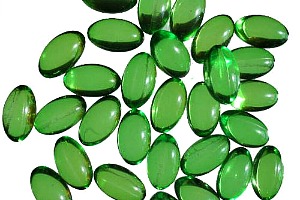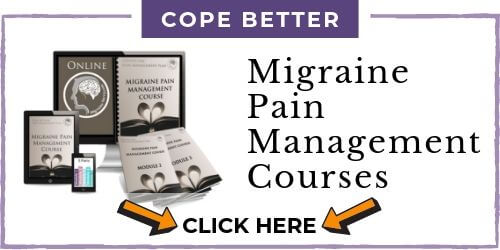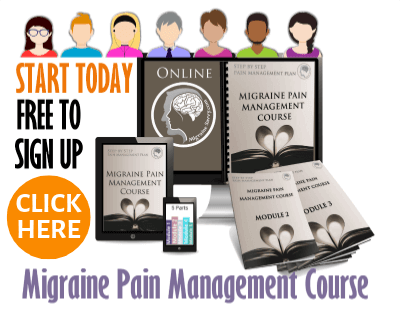- Home
- Pain Relief
- Home Remedies for Migraines
COMPLETE MAGNESIUM SUPPORT
My Top Choice - Magnesium Breakthrough - The ONLY supplement with all 7 essential magnesium types in one formula. Most only have 1-2 types, leaving you deficient.
Safe Home Remedies for Migraines in Children and Teenagers
Migraine attacks in children can be distressing, but home remedies for migraines often provide relief. Managing these episodes requires a combination of immediate relief techniques, preventive strategies, and natural remedies.
This comprehensive guide will help you explore safe and effective home remedies to support your child. With actionable tips, you'll learn how to stop the migraine from progressing and provide comfort exactly when your child needs it most.
 Safe Home Remedies for Migraines in Children @migrainesavvy
Safe Home Remedies for Migraines in Children @migrainesavvyContents
- What Causes Migraines in Children?
- Safe and Effective Home Remedies for Children
- Natural Remedies for Migraine Relief
- Home Remedies for Migraines in Kids Over 5
- Home Remedies for Migraines in Teenagers
- 5 Tips to Help Manage Your Child’s Migraine Attack
- Interactive Tools for Parents
- When Home Remedies Don’t Work
- Share Your Home Remedies!
- Want Expert Guidance?
- Recent Articles
What Causes Migraines in Children?
Understanding triggers is the first step in managing migraines. Common triggers in children include:
- Dietary triggers: Foods like chocolate, caffeine, and aged cheese. And too much sugar.
- Stress or anxiety: School pressure or family changes.
- Sleep disturbances: Irregular sleep patterns or insufficient rest.
- Dehydration: A frequent yet often overlooked cause.
Pro Tip: Use this Migraine Trigger Diary to log meals, activities, and symptoms to identify potential patterns.
Safe and Effective Home Remedies for Children
Immediate Relief Techniques
When your child experiences a migraine, acting quickly can help ease their pain.
1. Over-the-Counter Medications
- Use acetaminophen or ibuprofen, following the correct dosage based on your child’s weight and age.*
- Avoid aspirin for children under 14, as it is linked to Reye’s syndrome, a serious neurological condition.**
2. Rest and Relaxation
- Encourage your child to lie down in a quiet, dark room.
- Use an ice pack wrapped in a towel on their forehead to reduce pain.
3. Hydration
- Offer a glass of water, (little sips - 5 mls every 5 minutes) as dehydration can worsen the attack.
* All medications differ in dosage. It is crucial that you follow the dosage recommendation on the bottle.
Even better talk to the pharmacists or chemist before you purchase the product. They are a wealth of information, so use them. You can also call your doctor’s office, or surgery, to get more information and dosage instructions if your child is say underweight weight for his or her age or has other medical conditions.
If your child is under the age of 5, they may benefit from taking an over the counter (OTC) medicine and to spend one to three hours sleeping off the pain. A child older than 5 years old may need a more "aggressive" treatment to find efficient pain relief.
** In the book Migraine for Dummies, they have a warning not to give a child
younger than 14 years old aspirin. They say that the serious
neurological disorder called Reye’s syndrome has been linked to children
using aspirin.
Natural Remedies for Migraine Relief
Natural remedies can complement conventional methods, providing a holistic approach to migraine management.
Mix 2–3 drops of peppermint or lavender oil with water. Dip a cloth in the mixture and place it on your child’s forehead.
Be cautious to avoid the eyes and test a small area of skin first to ensure no irritation occurs.
Pro Tips: Place a face cloth in the bowl to soak up the oils and put on your child’s forehead. Be careful to keep away from the eyes, as peppermint can sting. Use hot or cold (put ice cubes inside) depending on which one seems to bring the greatest pain relief.
This facecloth can also be put under a hot water bottle (stomach, lower back, neck) for teenage girls around their menstrual cycle migraines. Rubbing the mixture directly on the skin, even when mixed with an almond oil base, might be too strong for your child’s delicate skin.
So be sparing, and spot test it first.
2. Herbal Teas
Ginger tea helps combat nausea associated with migraines. Chamomile tea can promote relaxation.
3. Guided Relaxation and Imagery
Teach your child progressive muscle relaxation or use guided imagery. For example, encourage them to imagine a cool, calming wave washing over their body, easing the pain. I've provided a script below you can use right now.
I can recommend these; they work well for children:
Home Remedies for Migraines in Kids Over 5
If the natural remedies above fail to work, it may help to add these lifestyle changes:
1. Avoid Known Triggers
- Keep a food and activity diary to identify common triggers.
- Eliminate or reduce foods like processed meats, artificial sweeteners, and caffeinated drinks.
2. Maintain Regular Routines
- Ensure consistent sleep and meal schedules.
- Encourage daily hydration to prevent dehydration.
3. Stress Reduction Techniques
- Teach mindfulness or breathing exercises.
- Use relaxing activities like gentle yoga or reading a favorite book to reduce stress.

Home Remedies for Migraines in Teenagers
Understanding Teen-Specific Migraine Triggers
Teenagers face unique migraine triggers due to hormonal changes, increased academic and social stress, and lifestyle factors such as screen time and irregular routines. Identifying these triggers is crucial for effective management.
1. Hormonal Fluctuations
Puberty, menstruation, and growth spurts can all contribute to migraine. Encourage teens to maintain a migraine diary to track symptoms and identify hormonal patterns.
2. Stress from School or Activities
High school demands and extracurriculars often increase stress. Teach stress-reduction techniques like mindfulness exercises, yoga, or deep breathing.
3. Tech-Related Triggers
Excessive screen time and poor posture can lead to eye strain and tension headaches. Encourage breaks using the 20-20-20 rule: every 20 minutes, look at something 20 feet away for 20 seconds.
Safe and Effective Remedies for Teens
While some remedies overlap with those for younger children, teens can benefit from age-specific adjustments.
1. Dietary Adjustments
Teens should eat balanced meals at regular intervals to prevent blood sugar drops, a common trigger. Include magnesium-rich foods like spinach, avocado, and almonds to reduce migraine frequency.
Caution against consuming energy drinks or excessive caffeine, as these can worsen symptoms.
2. Menstrual Migraine Relief
For menstrual migraines, suggest using a warm compress on the lower abdomen for cramps and a cool compress on the forehead for headache relief.
3. Safe Use of Caffeine
If caffeine is not a trigger, small amounts (like a cup of tea) can help relieve pain when taken with OTC medication like ibuprofen.
4. Essential Oils and Massage
Peppermint and lavender oils can be effective. Gently massage the temples or neck with diluted oil to relieve tension.
5. Encourage Relaxation Techniques
Teach progressive muscle relaxation or guided imagery to help teens calm their bodies and minds during an attack.
Preventive Strategies for Teenagers
1. Manage Stress and Sleep
Encourage teens to establish a consistent sleep schedule, even on weekends.
Introduce stress-management practices like journaling or creative hobbies to decompress.
2. Hydration Habits
Teach teens the importance of staying hydrated. Carrying a refillable water bottle can make this easier.
3. Physical Activity
Moderate exercise, like walking, swimming, or yoga, can help reduce migraine frequency. Avoid intense workouts that might trigger headaches.
4. Track Triggers with a Diary
Use a migraine diary to record potential triggers, symptoms, and remedies. Over time, this can help refine their prevention strategy.
By addressing the unique challenges teenagers face, these home remedies for migraines and preventive measures can empower them to manage migraines effectively. With the right combination of adjustments and support, teens can regain control over their daily lives and feel better equipped to handle migraines.
5 Tips to Help Manage Your Child’s Migraine Attack
1. Administer Medication Promptly
At the first sign of a headache, give an appropriate OTC pain reliever and monitor dosage carefully.
2. Use Caffeine Strategically
If caffeine is not a trigger, a small amount (e.g., a few tablespoons of coffee) can help amplify the effects of pain relievers.
3. Create a Soothing Environment
For Children: Set up a quiet, dimly lit room with soft pillows or a favorite blanket. Young children may benefit from having a comforting toy or gentle lullaby music playing in the background.
For Teenagers: Provide a distraction-free environment, ensuring noise and light levels are low. Teenagers may prefer using noise-canceling headphones or relaxing playlists on their phone.
Click here on headache music for some ideas, my meditation course or >> Pema Chodron
4. Massage or Touch Therapy
Gently stroke your child’s hair or massage their feet if it calms them. Avoid touch if it induces nausea.
5. Press Anti-Nausea Points
Apply gentle pressure to anti-nausea points on their wrists. Anti-nausea bands (shown above) can also be effective.
Want my help?
Interactive Tools for Parents
To make managing migraines easier, download these free resources:
- Migraine Trigger Diary: Track meals, activities, and symptoms.
- Printable Checklist: Quick-reference guide for handling migraine attacks.
- Guided Imagery Scripts: Help your child visualize calming, pain-relieving scenarios.
Relaxation Visualization for Kids
Make sure you're lying down comfortably or sitting in a cozy spot. Close your eyes gently, and let your body feel soft and relaxed.
Now, imagine little bubbles, soft sparkles, or even tiny rainbows gently moving through your body. These bubbles flow calmly and evenly, bringing warmth and comfort wherever they go.
Let’s follow those bubbles as they move...
- Start at the top of your head. Feel the bubbles gently drifting down through your neck, making everything soft and peaceful.
- They flow into your arms, down to your hands...
- Into your right hand, then each finger: your thumb... first finger... middle finger... ring finger... and your pinky finger.
- Now into your left hand, and each finger there too: thumb, first finger, middle finger, ring finger, and pinky finger.
Feel how your hands are becoming warm and relaxed.
Now, the bubbles drift down through your body... moving gently through your chest, into your tummy, and slowly down your legs.
- Feel them flowing into your right foot, then each toe: your big toe... second toe... third toe... fourth toe... and your little toe.
- Now into your left foot, and each toe there too: big toe, second toe, third toe, fourth toe, and little toe.
Your whole body feels warm and soft, like a cozy blanket is wrapped around you.
Imagine the sparkles or rainbows filling your hands and feet with soothing warmth. The cold or tight feelings are melting away, leaving you calm and comfortable.
Take a deep breath in... and as you breathe out, imagine the bubbles spreading all over, from your head to your toes. All the bubbles flowing out of your toes and down into the earth.
Feel that warmth and peace flowing through you, making you feel better and happier with every breath.
You’re safe, relaxed, and everything is okay.
Drifting off to sleep now. Cozy and warm, drifting... floating. Sleeping.
When Home Remedies Don’t Work
If these home remedies for migraines fail to provide relief, consult your doctor for further options. Persistent migraines may require prescription medications or specialized treatment plans.
Watch for unusual symptoms like persistent vomiting, confusion, or behavioral changes, and seek immediate medical attention if they occur.
Share Your Home Remedies!
What has worked for your child? Share your experiences in the >> Migraine Savvy Headache Forum << to help other parents find relief for their little ones.
Want Expert Guidance?
Explore these resources for additional support:
- Free Migraine Pain Management Workshop: 45 minutes of practical, proven strategies
Managing migraine in children requires a compassionate, informed approach. By combining immediate relief techniques with preventive strategies and natural remedies, you can help your child lead a happier, healthier life.
Sending a cyber hug to you and your little one,
WANT MORE TIPS? Subscribe to my newsletter and follow along on Facebook and Pinterest for all of the latest updates.
MIGRAINE RELIEF Related Articles
How to be more MIGRAINE SAVVY right now...
Home Remedies for Migraines References:
1. Prof James Lance, MD. (1993)
Migraines and Other Headaches. Compass Publishing Co. Pty. Limited, Australia. page 46.
2. Stafford, D. and Shoquist, J. MD. (2003)
Migraines for Dummies. Wiley Publishing, Inc: New York. pages 241-260.
























